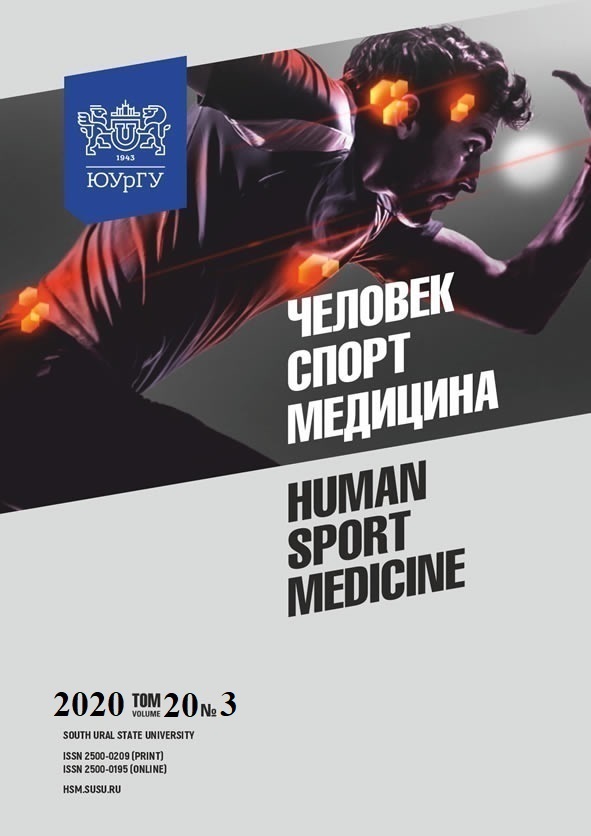ASSOCIATIVE DETERMINANTS OF THE TROPHOLOGICAL STATUS IN ATHLETES FROM AEROBIC AND ANAEROBIC SPORTS
Abstract
Aim. The paper aims to elaborate effectiveness criteria for aerobic and anaerobic training based on a comprehensive analysis of the athletes’ trophological status. Materials and methods. Anthropometric data, body composition, carbohydrate and fat metabolism indicators were collected for trained athletes (n = 41) once per day (in the morning) on an empty stomach. To find metabolic determinants for the training process of various orientations, athletes were divided into two groups, namely, a group with a predominantly aerobic orientation (n = 23) and those with a predominantly anaerobic one (n = 18). Results. The assessment of the athletes’ trophological status showed reliable correlations between body composition and aerobic capacities. Body composition indicators allow forecasting physical performance in predominantly aerobic sports. Total cholesterol and blood glucose dynamics reflect the nature of metabolic changes during long-term adaptation to aerobic and anaerobic exercises. Conclusion. In the group with aerobic training, sportsmanship depends on the anthropological and trophological statuses. The ratio of blood glucose to total cholesterol can act as a universal marker of aerobic and anaerobic capacities during long-term sports training.
References
References on translit
Copyright (c) 2020 Human. Sport. Medicine

This work is licensed under a Creative Commons Attribution-NonCommercial-NoDerivatives 4.0 International License.















